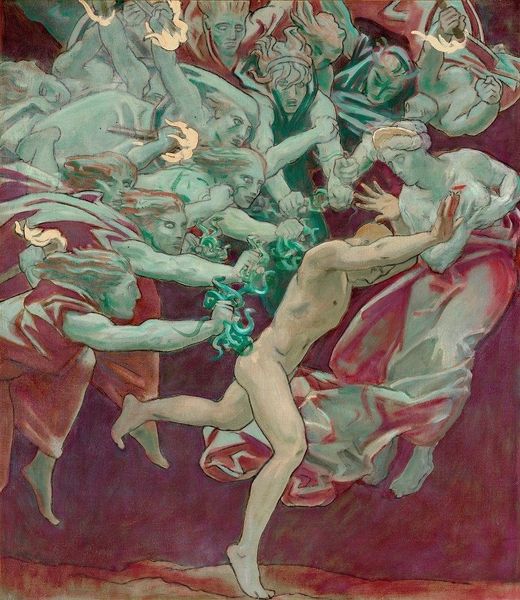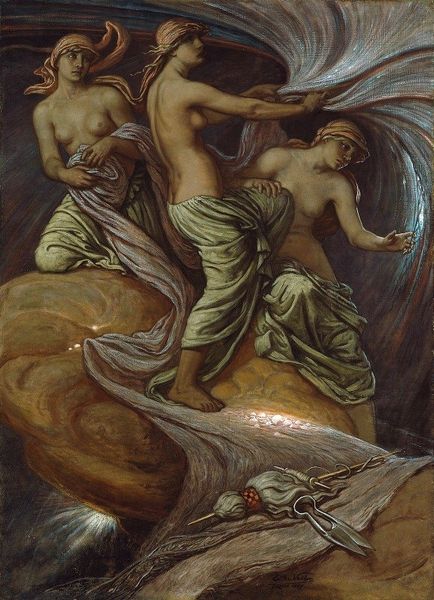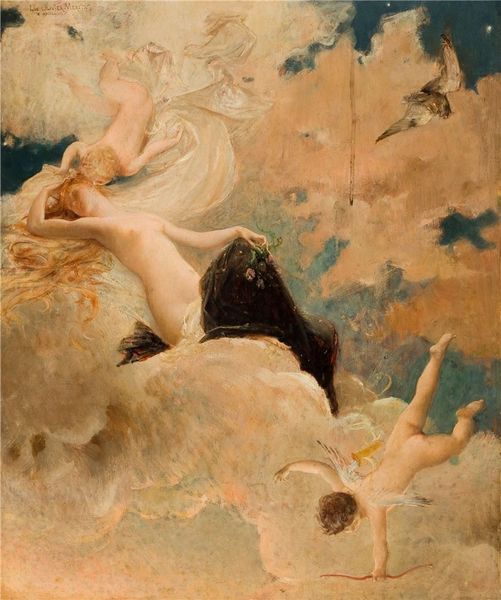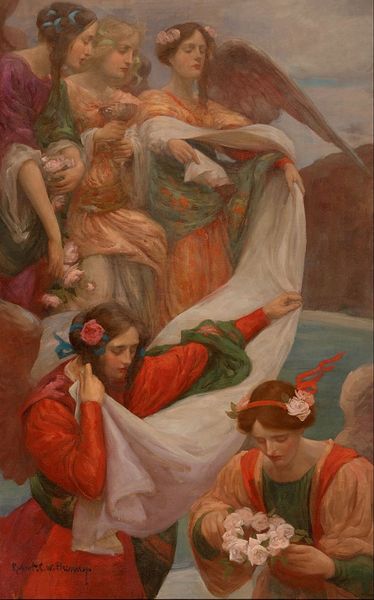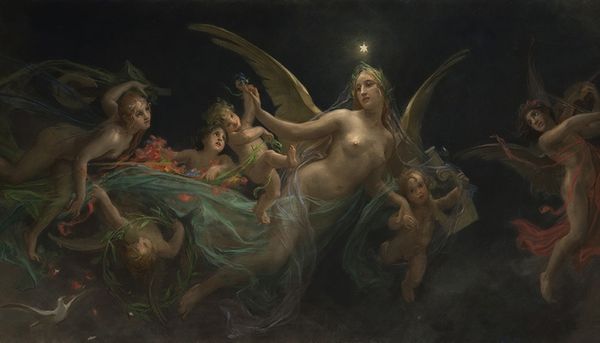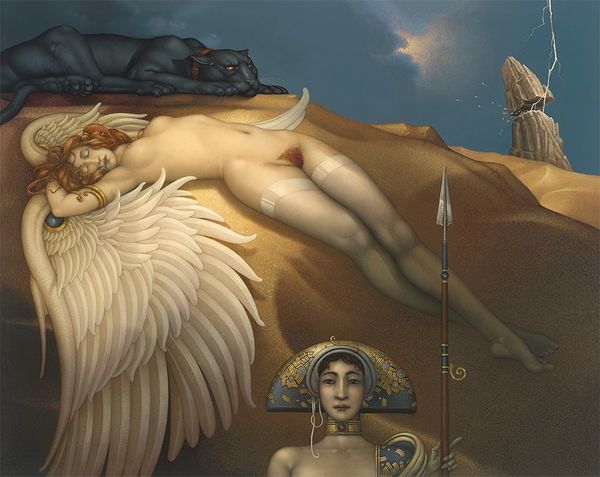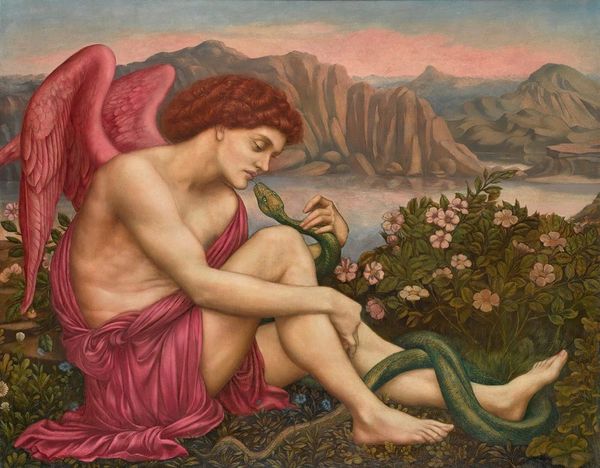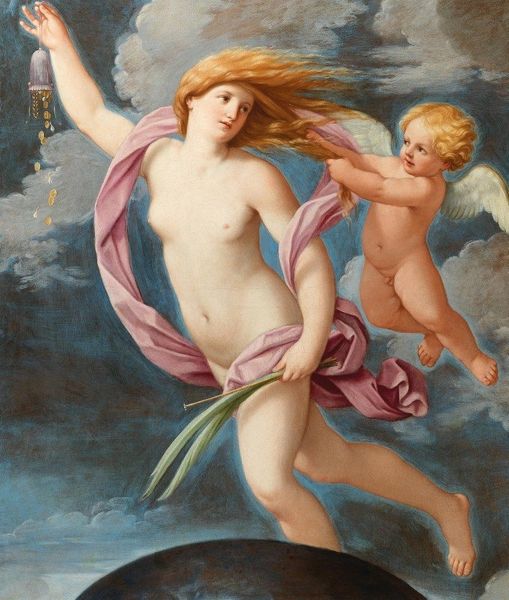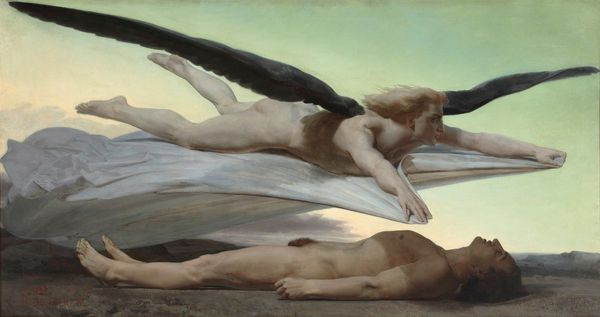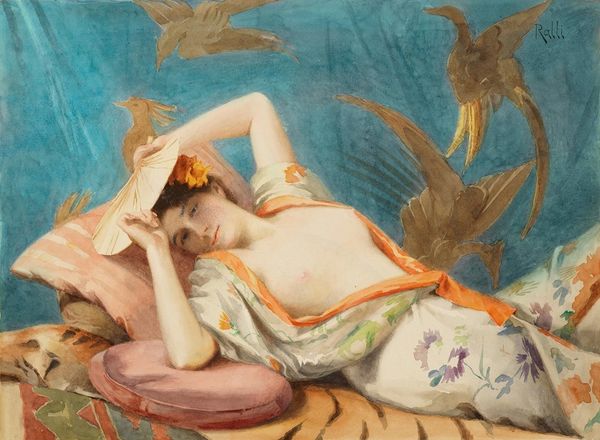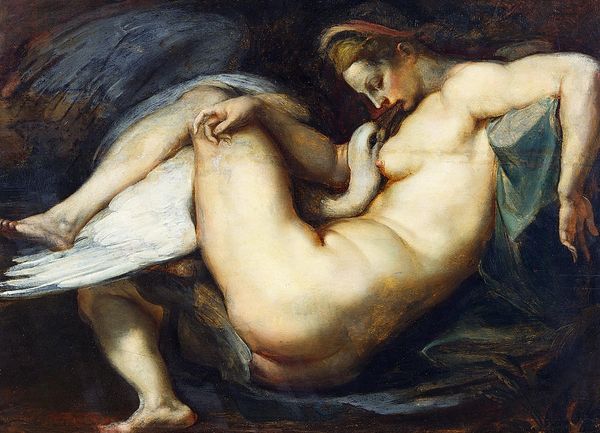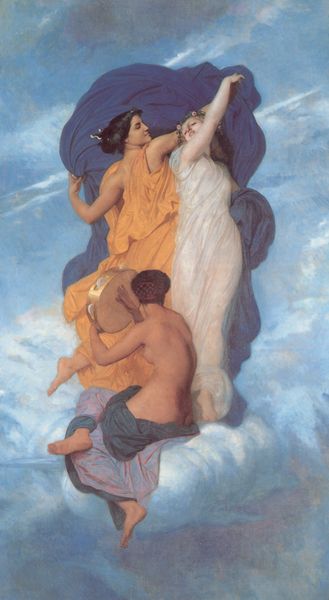
Copyright: Public Domain: Artvee
Curator: The overall tonality immediately strikes me—it’s melancholic, isn’t it? Despite the dreamlike quality, there's a palpable sense of sorrow. Editor: You've noticed Evelyn De Morgan’s “Night and Sleep” from 1878. Here, she uses oil paint to offer her allegorical depiction of these two powerful states. It feels connected to earlier romantic painting, yet offers something new. Curator: Absolutely. We're seeing the transition of familiar classical symbols being subtly reshaped. Note, for instance, how Sleep cradles poppies, traditional symbols of oblivion. He doesn't scatter them wildly but instead, seems to bestow them with intention. This controlled diffusion perhaps reflects the Victorian era’s own growing unease with simply succumbing to dreams. Editor: Exactly, it seems to me De Morgan cleverly merges earlier mythological and romantic iconography, reshaping them through a distinct lens influenced by Pre-Raphaelite aesthetics and Spiritualism. Night isn't merely a backdrop; she actively ushers Sleep, represented here as a youthful, almost androgynous figure, into being. Consider how she gathers him, with his cluster of poppies. These figures were really making mythology current for a late 19th century audience. Curator: I am interested by Night's gaze directed outwards. Is it defiance or perhaps a plea for understanding of this melancholic slumber they offer? The positioning feels self-conscious. Editor: Perhaps De Morgan intended that awareness. This work was created when debates about industrialization, science, and the soul were all the rage in popular debate. Even Night herself can not escape. Curator: These figures in perpetual transit underscore that in their time too, a deep current of social questioning underlies what, on the surface, appears a timeless fantasy. The ethereal presentation, I think, masks the underlying tension of their world as it transitions. Editor: So it’s a painting that draws us into an era when ancient archetypes navigated the onset of the modern. It makes one consider how artists engage these historical, social moments with such lasting resonance.
Comments
No comments
Be the first to comment and join the conversation on the ultimate creative platform.
